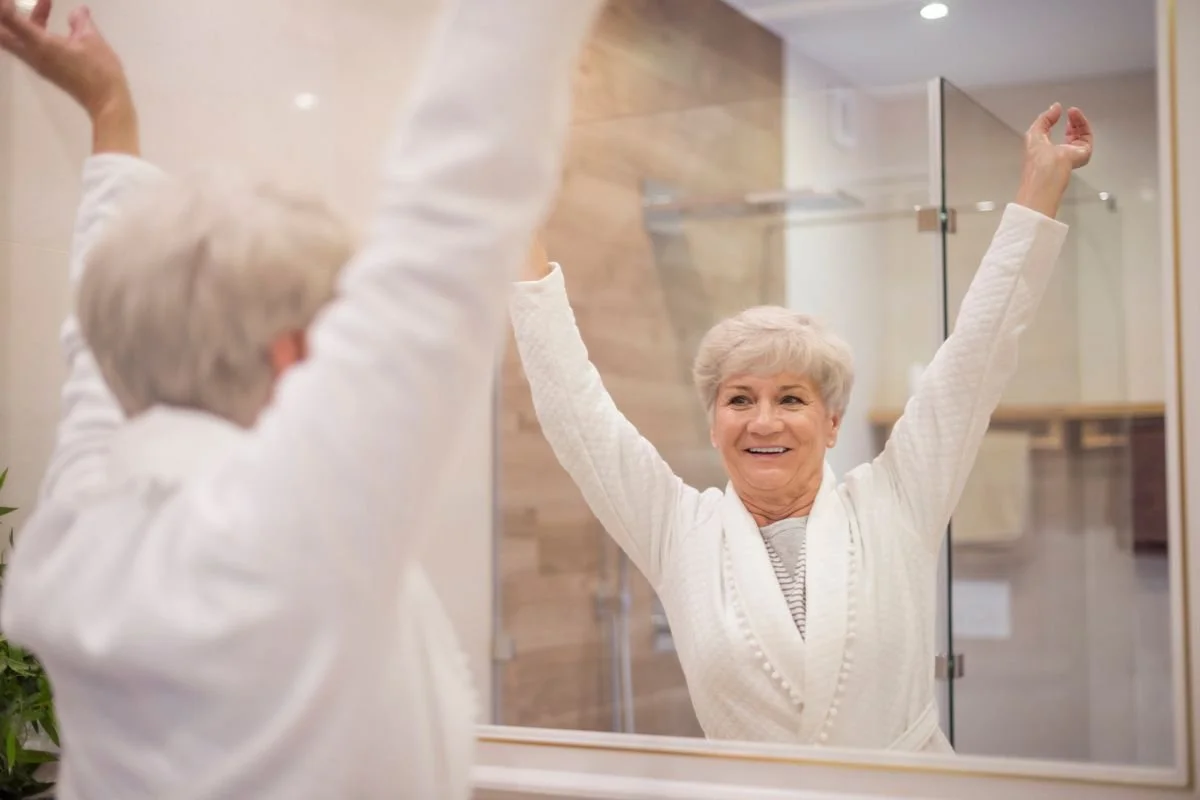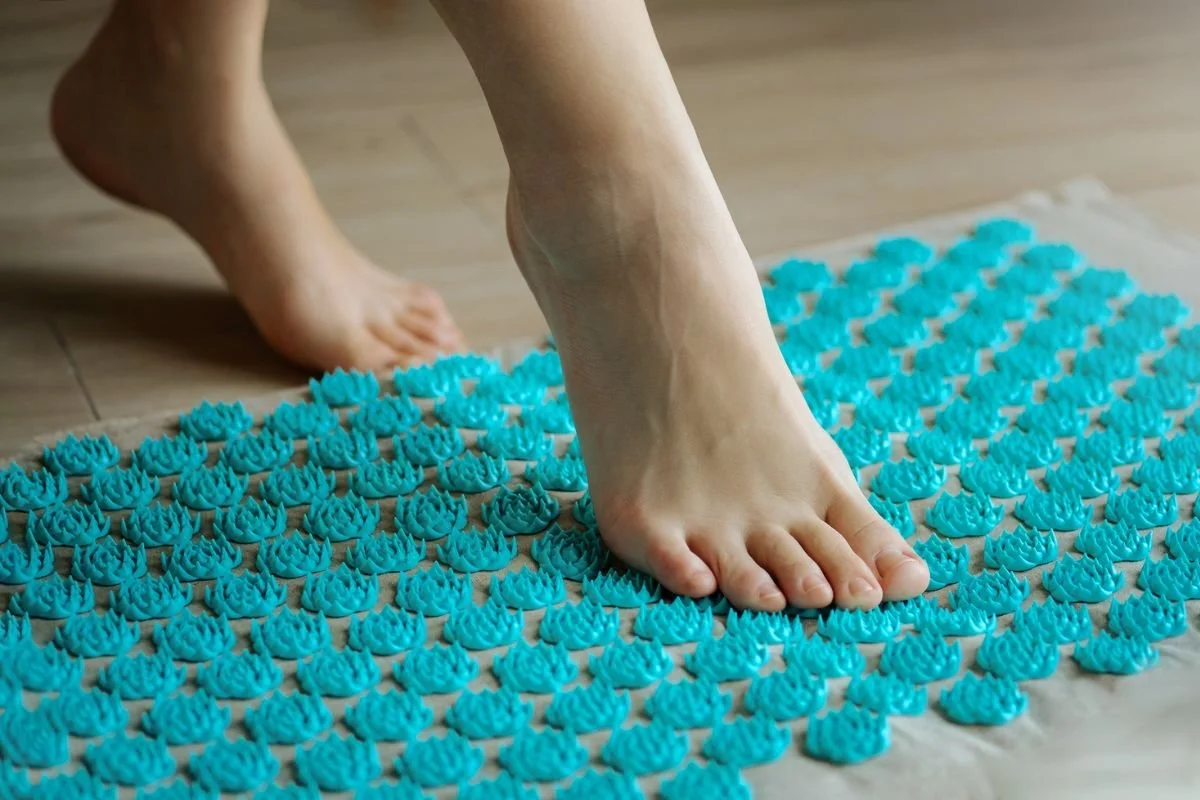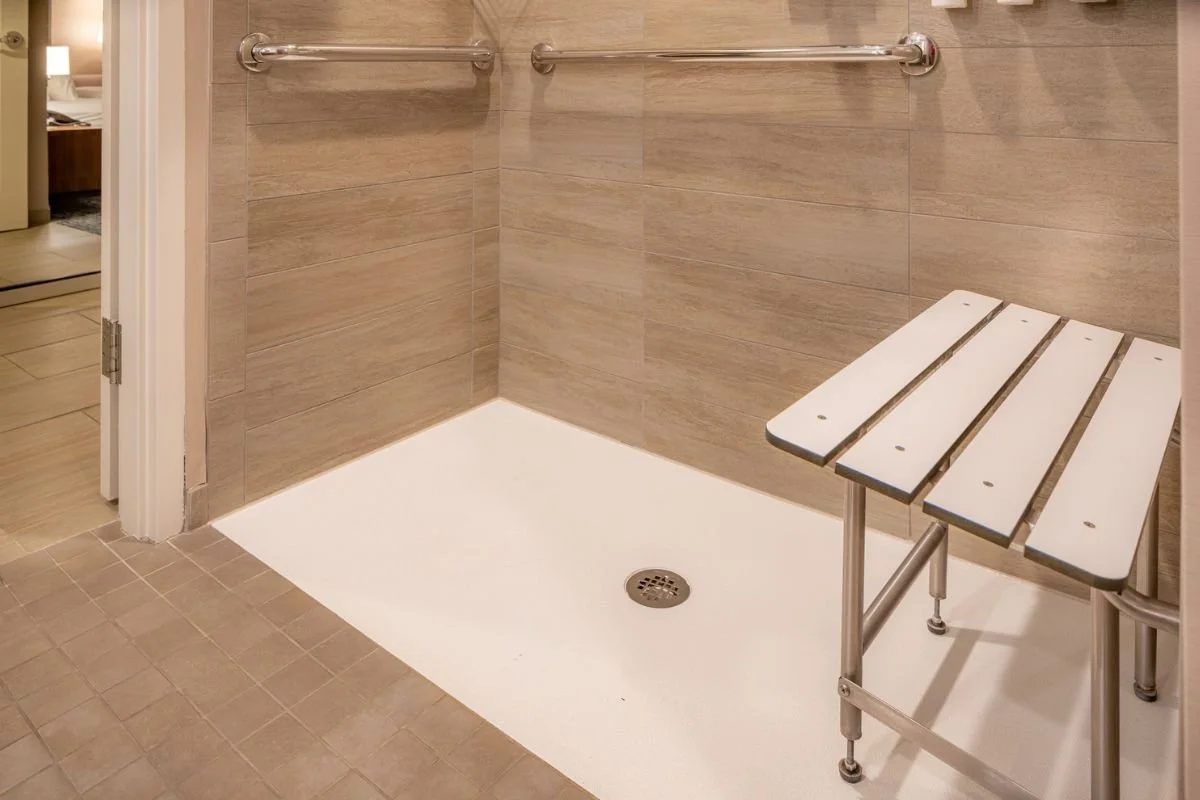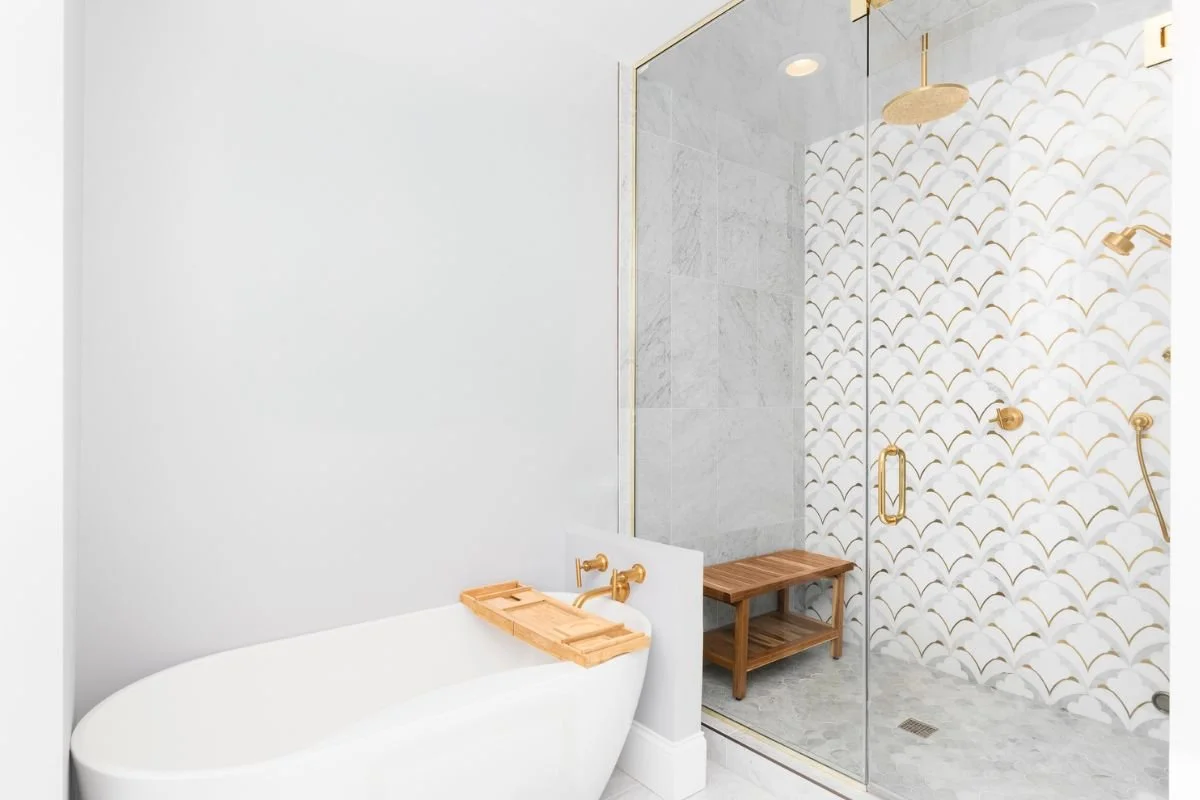How to Make Showering Easier for the Elderly
Ensuring safe and comfortable showering for elderly people is crucial for maintaining their independence, health, and personal hygiene. A well-designed bathroom can help improve bathroom safety and make the showering experience easier for seniors. This guide explores practical tips, essential equipment, and best practices to reduce the risk of falls and make showering safer for elderly individuals. Get a free quote today for installing a walk-in shower in your bathroom.
Why Should You Make Your Bathroom Safe for the Elderly?
A safe bathroom is essential for older adults because it helps reduce the risk of falling, ensures a comfortable bathing process, and provides a more accessible space for personal hygiene. Slippery surfaces and hard-to-reach areas increase the fall risk, but small changes can make a significant difference.
Safe Bathing Experience: A safer bathroom reduces the risk of falling.
Independence: Seniors can bathe more confidently with the right equipment.
Comfort: An accessible bathroom creates a more comfortable environment for daily routines.
What Are the Best Shower Safety Tips for Seniors?
To help improve bathroom safety for elderly individuals, here are some essential tips and tricks:
Install Grab Bars: Installing grab bars around the shower or bathtub provides a secure place to grab onto when entering or exiting.
Use a Non-Slip Mat: Placing a non-slip mat inside and outside the shower reduces the risk of slipping or falling.
Install a Hand-Held Shower: A hand-held shower head makes it easier for older adults to direct water where needed.
Place Items Within Easy Reach: Ensure that soap, shampoo, and towels are within arm’s reach to prevent overreaching.
How to Help an Elderly Person Bathe Safely
If an older person needs help with showering, there are several ways to make the process safer and more comfortable.
Use a Shower Chair or Transfer Bench: These provide a stable place to sit while showering.
Adjust Water Temperature: Set the water temperature to prevent burns and ensure a comfortable shower.
Install a Showerhead with an Adjustable Height: A hand-held showerhead can make it easier to bathe hard-to-reach areas.
What Equipment Can Help Prevent Falls in the Bathroom?
Investing in the right equipment can significantly reduce the risk of falling in the bathroom.
Non-Skid Mats: Place these mats in the shower and on the bathroom floor to prevent slipping.
Grab Bars: Install grab bars around the shower and near the toilet.
Raised Toilet Seats: Raised toilet seats reduce the effort needed to sit and stand.
Shower Chair: A shower chair provides a safe place to sit while bathing.
How Can a Walk-In Shower Improve Bathroom Safety for the Elderly?
A walk-in shower provides easy access for seniors with mobility issues. It eliminates the need to step over a high bathtub wall, reducing the risk of tripping and falling.
Barrier-Free Entry: No threshold to step over.
Non-Slip Flooring: Walk-in showers often include non-slip surfaces.
Shower Bench: Adding a shower bench provides a place to sit while showering.
Benefits of a Walk-In Shower
Easy to Clean: Walk-in showers are easier to clean than traditional tubs.
Customizable Features: Options like built-in shelving, grab bars, and seating make them adaptable.
Modern Aesthetics: Walk-in showers offer a sleek and modern look.
How to Make the Bathing Process Easier for Seniors with Arthritis
Seniors with arthritis may experience pain and difficulty during the bathing process. The following tips can help make bathing easier:
Use a Hand-Held Shower: This allows the person to control water flow with minimal effort.
Install Lever Faucets: Lever-style faucets are easier to operate than traditional knobs.
Provide a Shower Chair: A shower chair reduces the need to stand for long periods.
What Are the Benefits of a Transfer Bench?
A transfer bench helps seniors move safely from a wheelchair or seated position into the shower.
Provides Stability: Reduces the need for the person to stand while entering or exiting the shower.
Minimizes Effort: A transfer bench makes it easier for caregivers to assist with bathing.
Improves Independence: Seniors can bathe with less assistance.
How Often Should an Elderly Person Bathe?
The frequency of bathing depends on personal preference and health considerations. For elderly people, a bath or shower twice a week is often sufficient to maintain hygiene while reducing skin irritation.
Sponge Bath or Bed Bath: For those unable to bathe regularly, a sponge bath or bed bath can help maintain cleanliness.
Personal Hygiene: Regular washing of face, hands, and other areas helps maintain good hygiene between baths.
What to Do If an Elderly Person Refuses to Bathe
When an older adult refuses to bathe, it can be challenging for caregivers. Here are some helpful tips:
Address Concerns: Ask why they’re refusing and address any fears or discomfort.
Make It Comfortable: Use warm water, non-slip mats, and grab bars to make them feel secure.
Provide Assistance: Offer help with washing hair or hard-to-reach areas.
Break the Process into Steps: Offer assistance gradually, focusing on specific tasks such as washing hands or face first.
Tips for Improving Bathroom Safety for Older Adults
Ensuring a safe environment in the bathroom is key for reducing fall risks:
Keep the Bathroom Well-Lit: Ensure proper lighting to prevent trips and falls.
Avoid Clutter: Keep the bathroom floor clear of objects and obstacles.
Install Grab Bars Near the Toilet: These help with sitting and standing.
Maintain a Dry Floor: Wipe away excess water to prevent slipping.
How to Assist Seniors Living with Dementia During Bathing
Caring for a loved one with dementia can be challenging, especially during bathing. Here’s how to make it a safer experience:
Establish a Routine: Consistency helps reduce confusion.
Minimize Distractions: Keep the environment calm and focused.
Use a Calm Approach: Offer reassurance throughout the process.
Keep Tasks Simple: Break down tasks into manageable steps.
Key Takeaways
Make the bathroom safer by installing grab bars, non-slip mats, and a hand-held shower.
A walk-in shower can improve bathroom safety for seniors by providing easy access.
Shower chairs and transfer benches reduce the effort required to bathe.
Consider the needs of seniors with arthritis by using lever faucets and a shower chair.
Maintain hygiene with regular bathing, sponge baths, or bed baths.
Address concerns if a person refuses to bathe by ensuring comfort and safety.
Walk-in showers provide modern aesthetics, easy cleaning, and customizable features.
Create a safe environment by keeping the bathroom well-lit, dry, and clutter-free.
Get Your Free Quote Today!
If you're considering making your bathroom safer for an elderly loved one, get a free quote today for walk-in showers, grab bars, and other bathroom safety solutions.






